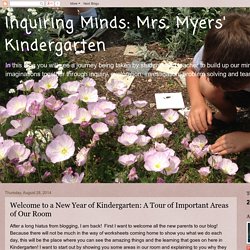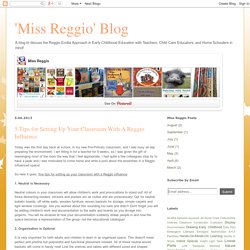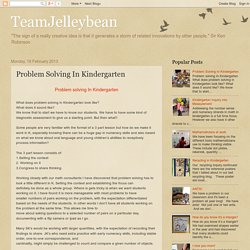

Wonders in Kindergarten. Inquiring Minds: Mrs. Myers' Kindergarten: Exploring Sound: The Investigation. I had noticed early on that a majority of the kids in this class were exploring sound in their play.

They were constantly creating things and showing me how they made sound! This was also happening on the playground. I knew that this group would be very interested in doing an in depth sound inquiry. I asked them what they wondered about sound. Most of their questions were centered around how instruments work. I set out bells of different sizes and canisters with objects of different sizes inside of them. They noticed right away that you made sound with these by shaking but noticed that they all sounded different!
CAP 1. Mrs. Myers' Kindergarten. After a long hiatus from blogging, I am back!

First I want to welcome all the new parents to our blog! Because there will not be much in the way of worksheets coming home to show you what we do each day, this will be the place where you can see the amazing things and the learning that goes on here in Kindergarten! I want to start out by showing you some areas in our room and explaining to you why they are so important for your child's learning experience. Here is a glance at our environment! I have worked to create a calming environment that provides experiences that encourage the children to learn, no matter where they go in our room! Materials are shared in the middle of the tables. Materials for art, science and projects were categorized by my students last year and are displayed where we can grab them when needed! Here is the library with some friendship art created by past classes. The writing area is ready for them to start recording their stories on paper! This is the clay area.
Reggio Inspired Teacher. Miss Reggio: 5 Tips for Setting Up Your Classroom With A Reggio Influence. Today was the first day back at school, in my new Pre-Primary classroom, and I was busy all day preparing the environment.

I am filling in for a teacher for 9 weeks, so I was given the gift of rearranging most of the room the way that I feel appropriate. I had quite a few colleagues stop by to have a peak and I was motivated to come home and write a post about the essentials in a Reggio influenced space! So here it goes, five tips for setting up your classroom with a Reggio influence:1. Neutral is NecessaryNeutral colours in your classroom will allow children's work and provocations to stand out! All of those distracting borders, stickers and posters act as clutter and are unnecessary! The Curious Kindergarten. Lately I’ve had the opportunity to work with educators who are either teaching Kindergarten for the first time or are moving from a half-day Kindergarten to a full-day Kindergarten program.

I get a lot of questions about how to structure a full day for our early learners. In this post, I’ll try and give you an idea of how we’ve arranged our weekly schedule to work best for our program and student needs. Please keep in mind, this is just one way of organizing things and that our schedule does change as the year progresses and as we find things are either working well/not working at all. Also keep in mind that “prep” times are periods on our schedule that are assigned by the school. Here is our current weekly schedule. When we were arranging our schedule, we felt it was important to make sure that the children had ample time for working at discovery centres, both in the morning and in the afternoon. Reflection time is a crucial part of our day. Crayons, wands & building blocks. Team Jelly Bean. Problem solving In Kindergarten What does problem solving in Kindergarten look like?

What does it sound like? We know that to start we have to know our students. We have to have some kind of diagnostic assessment to give us a starting point. But then what? Some people are very familiar with the format of a 3 part lesson but how do we make it work in K, especially knowing there can be a huge gap in numeracy skills and also based on what we know about oral language and young children’s abilities to receptively process information?
The 3 part lesson consists of: 1.Setting the context 2.